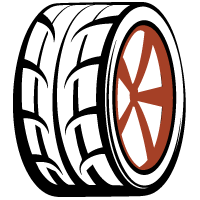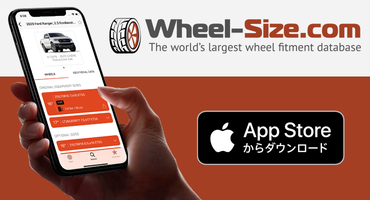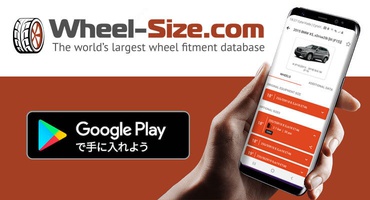ポルシェ 928
I [1977 .. 1995] 世代. ホイール装備ガイド どのホイールとタイヤがポルシェ 928I [1977 .. 1995]に合うか確認

ポルシェ 928 I [1977 .. 1995] - 改良
ポルシェ 928 I [1977 .. 1995] 4.5
236 hp- 世代: I [1977 .. 1995] [EUDM]
- 生産: [1977 .. 1983]
-
販売地域: 米国
-
最高出力: 236 hp | 176 kW | 239 PS
- エンジン: , Petrol
-
センターボア / ハブボア:
-
ボルトパターン (PCD):
-
ホイールファスナー: ナット
-
ホイールスレッドサイズ:
-
ホイール締め付けトルク:
| タイヤ | リム | オフセット範囲 mm | バックスペーシング mm インチ | タイヤ重量 kg lb |
|
||
|---|---|---|---|---|---|---|---|
| 185/70SR15 | 7Jx15 ET65 | 167 6.57 | 10.1 22.3 |
2.5 3.0 36 44 |
|
||
| 215/60VR15 | 7Jx15 ET65 | 167 6.57 | 10.8 23.9 |
2.5 3.0 36 44 |
|
||
| 205/55SR16 | 7Jx16 ET65 | 167 6.57 | 10.0 22.1 |
2.5 3.0 36 44 |
|
||
| 225/50VR16 | 7Jx16 ET65 | 167 6.57 | 10.6 23.3 |
2.5 3.0 36 44 |
|
ポルシェ 928 I [1977 .. 1995] 4.7 S
296 hp- 世代: I [1977 .. 1995] [EUDM]
- 生産: [1980 .. 1983]
-
販売地域: 米国
-
最高出力: 296 hp | 221 kW | 300 PS
- エンジン: , Petrol
-
センターボア / ハブボア:
-
ボルトパターン (PCD):
-
ホイールファスナー: ナット
-
ホイールスレッドサイズ:
-
ホイール締め付けトルク:
| タイヤ | リム | オフセット範囲 mm | バックスペーシング mm インチ | タイヤ重量 kg lb |
|
||
|---|---|---|---|---|---|---|---|
| 205/55SR16 | 7Jx16 ET65 | 167 6.57 | 10.0 22.1 |
2.5 3.0 36 44 |
|
||
| 225/50VR16 | 7Jx16 ET65 | 167 6.57 | 10.6 23.3 |
2.5 3.0 36 44 |
|
||
|
225/50VR16
245/45VR16 |
7Jx16 ET65
8Jx16 ET52.3 |
167 167 6.57 6.57 |
10.6 10.7 23.3 23.5 |
2.5 3.0 36 44 |
|
ポルシェ 928 I [1977 .. 1995] 4.7 S
306 hp- 世代: I [1977 .. 1995] [EUDM]
- 生産: [1984 .. 1986]
-
販売地域: 米国
-
最高出力: 306 hp | 228 kW | 310 PS
- エンジン: , Petrol
-
センターボア / ハブボア:
-
ボルトパターン (PCD):
-
ホイールファスナー: ナット
-
ホイールスレッドサイズ:
-
ホイール締め付けトルク:
| タイヤ | リム | オフセット範囲 mm | バックスペーシング mm インチ | タイヤ重量 kg lb |
|
||
|---|---|---|---|---|---|---|---|
| 167 6.57 | 10.0 22.1 |
2.5 3.0 36 44 |
|
||||
|
|
|
167 167 6.57 6.57 |
10.6 10.7 23.3 23.5 |
2.5 3.0 36 44 |
|
||
| 167 6.57 | 10.6 23.3 |
2.5 3.0 36 44 |
|
ポルシェ 928 I [1977 .. 1995] 5.0 GT
326 hp- 世代: I [1977 .. 1995] [EUDM]
- 生産: [1989 .. 1992]
-
販売地域: 米国
-
最高出力: 326 hp | 243 kW | 330 PS
- エンジン: , Petrol
-
センターボア / ハブボア:
-
ボルトパターン (PCD):
-
ホイールファスナー: ナット
-
ホイールスレッドサイズ:
-
ホイール締め付けトルク:
| タイヤ | リム | オフセット範囲 mm | バックスペーシング mm インチ | タイヤ重量 kg lb |
|
||
|---|---|---|---|---|---|---|---|
| 167 6.57 | 10.6 23.3 |
2.5 3.0 36 44 |
|
||||
|
|
|
174 170 6.85 6.69 |
10.6 10.7 23.3 23.5 |
2.5 3.0 36 44 |
|
||
|
|
|
174 170 6.85 6.69 |
10.1 11.0 22.2 24.3 |
2.5 3.0 36 44 |
|
ポルシェ 928 I [1977 .. 1995] 5.0 GTS
345 hp- 世代: I [1977 .. 1995] [EUDM]
- 生産: [1992 .. 1995]
-
販売地域: 米国
-
最高出力: 345 hp | 257 kW | 349 PS
- エンジン: , Petrol
-
センターボア / ハブボア:
-
ボルトパターン (PCD):
-
ホイールファスナー: ナット
-
ホイールスレッドサイズ:
-
ホイール締め付けトルク:
| タイヤ | リム | オフセット範囲 mm | バックスペーシング mm インチ | タイヤ重量 kg lb |
|
||
|---|---|---|---|---|---|---|---|
|
|
|
174 170 6.85 6.69 |
10.6 10.7 23.3 23.5 |
2.5 3.0 36 44 |
|
||
|
|
|
174 170 6.85 6.69 |
10.1 11.0 22.2 24.3 |
2.5 3.0 36 44 |
|
ポルシェ 928 I [1977 .. 1995] 5.0 S KAT
284 hp- 世代: I [1977 .. 1995] [EUDM]
- 生産: [1985 .. 1986]
-
販売地域: 米国
-
最高出力: 284 hp | 212 kW | 288 PS
- エンジン: , Petrol
-
センターボア / ハブボア:
-
ボルトパターン (PCD):
-
ホイールファスナー: ナット
-
ホイールスレッドサイズ:
-
ホイール締め付けトルク:
| タイヤ | リム | オフセット範囲 mm | バックスペーシング mm インチ | タイヤ重量 kg lb |
|
||
|---|---|---|---|---|---|---|---|
| 167 6.57 | 10.0 22.1 |
2.5 3.0 36 44 |
|
||||
|
|
|
167 167 6.57 6.57 |
10.6 10.7 23.3 23.5 |
2.5 3.0 36 44 |
|
||
| 167 6.57 | 10.6 23.3 |
2.5 3.0 36 44 |
|
ポルシェ 928 I [1977 .. 1995] 5.0 S4
315 hp- 世代: I [1977 .. 1995] [EUDM]
- 生産: [1987 .. 1992]
-
販売地域: 米国
-
最高出力: 315 hp | 235 kW | 320 PS
- エンジン: , Petrol
-
センターボア / ハブボア:
-
ボルトパターン (PCD):
-
ホイールファスナー: ナット
-
ホイールスレッドサイズ:
-
ホイール締め付けトルク:
| タイヤ | リム | オフセット範囲 mm | バックスペーシング mm インチ | タイヤ重量 kg lb |
|
||
|---|---|---|---|---|---|---|---|
| 167 6.57 | 10.0 22.1 |
2.5 3.0 36 44 |
|
||||
|
|
|
167 167 6.57 6.57 |
10.6 10.7 23.3 23.5 |
2.5 3.0 36 44 |
|
||
|
|
|
174 170 6.85 6.69 |
10.6 10.7 23.3 23.5 |
2.5 3.0 36 44 |
|
The size of the hole in the center of a wheel is known as the center bore or centerbore.
- Recommended for winter
- Run-flat tires
- Link comes to the calculator page for comparison
- Steel wheels
OE - Original Equipment
![]() - Tire Pressure
- Tire Pressure
![]() - Front axle
- Front axle
![]() - Rear axle
- Rear axle
Offset is the distance in millimetres from the centre line of the wheel to the wheel’s mounting face. Given that the mounting face can be either in front of or behind the centreline, the offset can be either neutral, positive or negative.
The Pitch Circle Diameter (PCD) is the diameter of the circle which passes through the centre of all the studs, wheel bolts or wheel rim holes
hp - Mechanical horsepower
kW - Kilowatts
PS - Metric horsepower
Wheel backspace is the distance from a wheel's mounting surface to the back edge of the wheel.
Tire pressure is a vehicle's recommended cold tire inflation pressure. It is measured in bars or PSI (pounds per square inch).
A sales region is a global automotive region in which a vehicle was officially sold or is still being sold.
Ex.: 7J x 15 Rim width (inches) x rim diameter (inches)
ISO standard Ex.: M12 x 1.25 Nominal diameter (mm) x pitch (mm)
UN-series Ex.: 9/16" - 18 UNF
Thread size (in) - thread pitch
UNF - Unified National Fine Thread
Example: 215/55 R16 91 T
215 is the tire width in mm
55 is the ratio of profile height to width or simply 'profile'. With the same width, the larger this indicator, the higher the tire will be and vice versa
16 - diameter of the wheel (disk) in inches. (It is the diameter, not the radius!). This is the inner size of the tire or the outer size of the rim
91 - load index. This is the level of maximum permissible load on one wheel
T - tire speed index
The method of attaching a wheel to a hub: wheel nuts or wheel bolts
The torque value specified by the manufacturer for wheel bolts or wheel nuts, which is to be set when tightening on the torque tool (torque setting). A rotational force given in Newton metres (Nm) or foot-pounds (ft-lbs), wheel torque measures lug nut / bolts tightness
Rating
The tires included with a new vehicle when it is purchased. OE tires are specifically chosen by the vehicle manufacturer to make the most of the vehicle's performance characteristics.

![ポルシェ 928 I [1977 .. 1995] [EUDM] ポルシェ 928 I クーペ](https://cdn.wheel-size.com/thumbs/70/6b/706b71948e17a7b9dacbe14c3a680a52.jpg)



